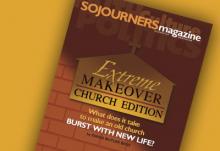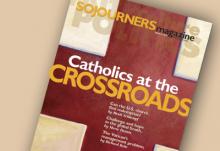Letter to the Editors
Community
Wander into Brooklyn’s Red Hook neighborhood on a Saturday morning in summer and you’ll see a sight not uncommon in New York City these days: a thriving and well-diversified farmers market.
Neighborhood denizens cluster around stands offering free-range meat, raw-milk cheese, cream-on-top milk, and a whole array of fresh fruit and vegetables—many of them grown right down the block from the market.
Yet unlike most of New York’s bustling greenmarkets, which tend to thrive in upscale residential and shopping areas, this one lies in one of the city’s poorest neighborhoods. Red Hook’s median family income is $15,000—below the federal poverty line of $19,000. Forty percent of the neighborhood’s families live on less than $10,000 per year. The unemployment rate for 16- to 19-year-olds stands at 75 percent.
In fact, not many outsiders wander into Red Hook. When New York City’s legendary city planner Robert Moses patched together plans for the Brooklyn-Queens Expressway in the 1940s, he decided to spare aristocratic Brooklyn Heights and its stately brownstones, sending the BQE along the waterfront at that point. Just south, though, he let the road slice right into working-class Red Hook, leaving it shoehorned between a traffic-choked highway on one side and New York Harbor on the other.

Whether founding schools or fixing toilets, Nelson good embodied community and faithful living.

With fierce faith, Julia Bonds works to save the land and people of West Virginia.
The largest gathering of American Indians in U.S. history came together in Washington, D.C., in September for the opening of the Smithsonian’s National Museum of the American Indian.

An interview with Paul Elie on faith, writing, and the "School of the Holy Ghost."
A year of voluntary service has become a rite of passage for thousands of socially conscious young Christians.
'If Buddhism helps them, so be it, but maybe they just need to be better Christians or better Jews.'
What does it take to create community? A calm and tender manner isn't a bad place to start.
The Word on the Street has the potential to be a book about two theologians who volunteer at a soup kitchen, feel good about themselves, and write heart-warming stories about their experiences.
With our family's move last year from urban Jackson, Mississippi, to small-town Vermont, I exchanged the blackest state for the whitest and neighborhood drive-bys for wild turkey dive-bys.
Little Calumet Christian Fellowship is the first Mennonite church in North America to intentionally form a Generation X congregation with pastoral leadership from within that generation.